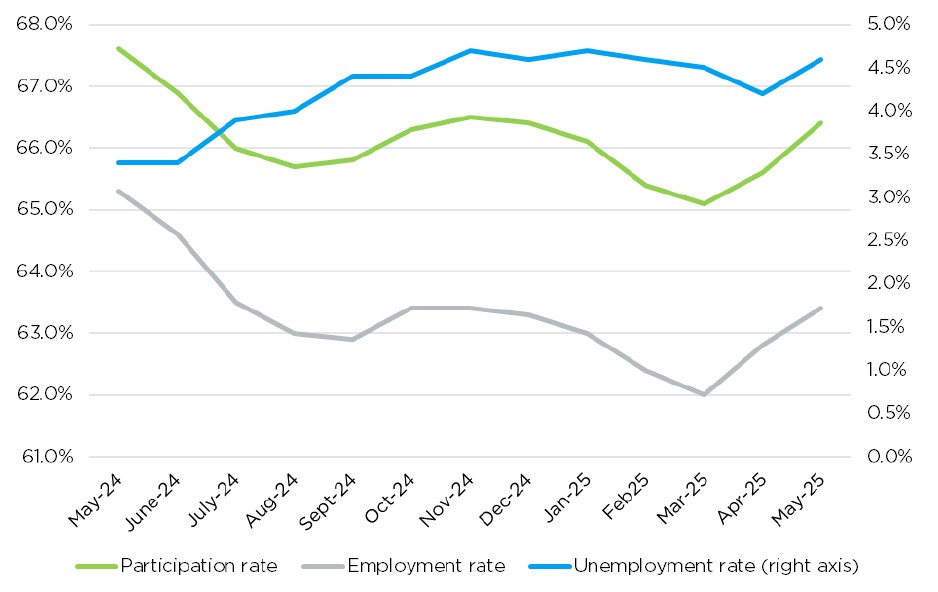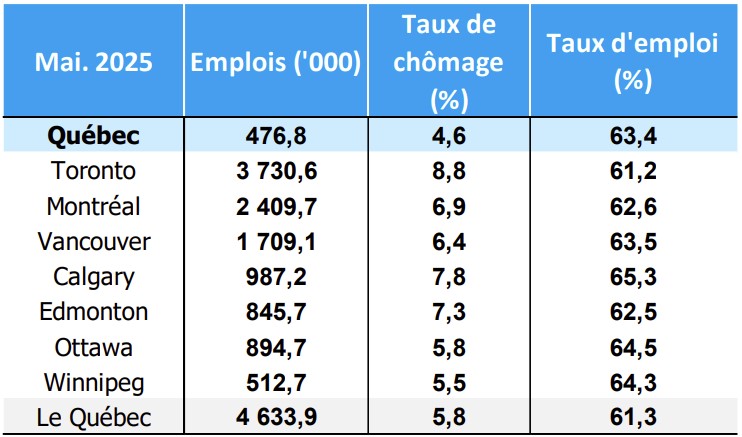Highlights – May 2025

Data visualization
Evolution of the key employment indicators over one year
 Sources: Statistics Canada, Table 14-10-0459-01, and Québec International.
Sources: Statistics Canada, Table 14-10-0459-01, and Québec International.
Overview of employment in major Canadian regions

Analysis
Employment above 475,000 in the Québec City CMA
According to Statistics Canada’s Labour Force Survey (LFS), the Québec City CMA labour market continued to grow in May in a context where most key indicators progressed favourably. The region registered a net increase of 5,100 jobs (+1.1%), and even stronger growth in the labour force (+1.4%). This relative imbalance resulted in a slight increase in the unemployment rate (+0.4 percentage points [pp]), while the employment rate grew by 0.6 pp. A simultaneous increase in both the employment rate and the unemployment rate often reflects an increase in labour market participation, where employment growth is too slow to absorb the volume of new individuals in the labour force.
The region’s dynamics in May stood out from the main trends observed in the province of Quebec and Canada, where the variations were more modest. Although the unemployment rate remained mostly stable in the province and Canada, with variations of +0.1 pp and +0.2 pp respectively, the Québec City region managed to maintain its enviable position and displayed once again the lowest unemployment rate among the eight major Canadian CMAs.
Different sectors, different labour markets
The region’s diverse labour market can be divided into several segments, each impacted by sector-specific dynamics. This diversity is explained by major differences in terms of labour demand, conditions on employment and skill scarcity (see the Labour Market report).
From May 2024 to May 2025, some sectors like business, building and other support services or information, culture and leisure experienced steady employment growth. Seasonally adjusted data shows an increase of 32.9% and 28.2% in these two sectors of growth, respectively. However, others have either slowed down or declined. Over one year, the two sectors that recorded the highest decline in employment were transportation and warehousing (-25.3%) and accommodation and food services (-15.3%). This plurality requires distinct approaches in analyzing the labour market, as issues vary from sector to sector.
Diversity in the labour market may become especially noticeable in the context of the tariff war, with some industries being directly targeted, while others are largely spared.
Rosalie Forgues
Economist
Québec International




